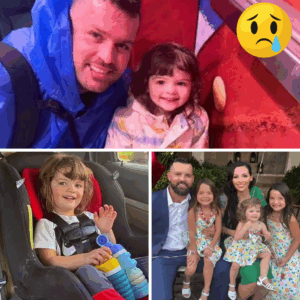In the sun-drenched sprawl of South Florida, where palm fronds sway lazily against azure skies and gated communities whisper of suburban serenity, a routine Monday morning shattered into chaos on November 10, 2025. At precisely 10:14 a.m., a Beechcraft King Air twin-turboprop aircraft—laden with pallets of water bottles, non-perishable food, medical kits, and diapers—lifted off from Fort Lauderdale Executive Airport, its wings heavy with hope for a hurricane-ravaged Jamaica. Bound for Montego Bay, the small plane carried the fruits of a fervent relief drive organized by Broward County’s vibrant Caribbean American community. But mere minutes into the flight, tragedy struck: the aircraft plummeted into a retention pond in the Windsor Bay gated neighborhood of Coral Springs, a leafy suburb just 15 miles northwest of the airport. Two souls—the pilot and a mission coordinator—perished in the wreckage, their selfless mission ending not in deliverance, but in a watery grave that has left rescuers grappling with debris and a region mourning a double blow from nature’s fury and mechanical misfortune.
The crash unfolded with the abrupt ferocity of a tropical squall. Eyewitnesses in the 5000 block of Northwest 57th Way, a quiet cul-de-sac lined with manicured lawns and two-story colonials, described a low-flying drone growing louder, then a guttural sputter. Kenneth DeTrolio, a 62-year-old retiree sipping coffee in his kitchen, felt the vibration first—a tremor that rattled his windows like distant thunder. Glancing out, he saw the Beechcraft, its silver fuselage glinting in the morning sun, clipping treetops before barreling through his backyard fence. Palm fronds exploded in a green haze as the plane sheared off branches, splintered a wooden arbor, and skidded across manicured grass before nosediving into the pond with a resounding splash that sent ripples racing to the far shore. “It was like a bad dream,” DeTrolio recounted later, his voice steady but eyes distant. “The nose went under first, then the tail flipped up. Water everywhere, and this awful silence after.”
David Ubegi, a landscaper trimming hedges two doors down, captured the horror on his phone—a shaky 22-second video that would go viral by noon, amassing millions of views on social media platforms. In the footage, the plane’s silhouette hurtles low over rooftops, engines whining in protest, before vanishing behind a row of oleanders. A plume of white foam erupts from the pond, followed by the acrid tang of aviation fuel mingling with the scent of wet earth. “I thought it was going to hit the houses,” Ubegi said, his hands still trembling as he showed the clip to arriving reporters. “Kids were out playing earlier—thank God they weren’t there.” Miraculously, no one on the ground was injured; the aircraft’s path skirted rooftops by mere feet, embedding shards of propeller in a culvert but sparing the cluster of homes clustered around the water hazard.
Emergency responders swarmed the scene within four minutes, sirens wailing through the Sawgrass Expressway’s morning crawl. Coral Springs-Parkland Fire Department units from Station 16 arrived first, followed by Coconut Creek divers and Broward Sheriff’s Office aviation teams. Deputy Fire Chief Mike Moser, boots squelching in the muck, directed the frenzy: yellow tape cordoning the pond’s edge, where twisted aluminum gleamed like shattered mirrors amid lily pads and discarded shopping carts. “We followed a debris trail straight into the water,” Moser briefed the press from a makeshift command post under a cluster of banyan trees. Initial dives yielded fragments—a wing flap tangled in cattails, a seat cushion bloated and bobbing—but no sign of life. “Our teams entered the pond and searched methodically. No victims located. This has transitioned to recovery.”
By midday, the grim confirmation came: two fatalities. The victims were identified late Monday as Captain Elena Vasquez, 48, a seasoned Jamaican-American pilot with over 5,000 flight hours, and Marcus “Rasta” Thompson, 35, a logistics coordinator for the Caribbean Relief Network. Vasquez, a former U.S. Coast Guard aviator who flew rescue missions during Hurricane Maria in 2017, had volunteered her plane and skills for the run. Thompson, a Kingston native transplanted to Fort Lauderdale, coordinated the supply chain from donation drives at local churches and malls. Friends remembered them as pillars of the community: Vasquez, with her infectious laugh and tales of dodging downdrafts over the Blue Mountains; Thompson, whose dreadlocks and easy smile masked a fierce dedication to “bringing home what Jamaica needs most—hope in a box.” Autopsies, pending from the Broward County Medical Examiner’s Office, point to blunt force trauma and drowning, though the National Transportation Safety Board (NTSB) has dispatched investigators to probe mechanical failure, possible bird strikes, or pilot error amid the post-takeoff climb.
This catastrophe arrives as a cruel coda to Hurricane Melissa, the monstrous Category 5 storm that clawed across the Caribbean like a vengeful spirit. Making landfall near Annotto Bay on October 28, 2025, Melissa tied records as one of the strongest hurricanes to ever strike the Atlantic basin, with sustained winds of 190 mph and a storm surge that swallowed coastal villages whole. Jamaica bore the brunt: over 150 confirmed dead, thousands homeless, and infrastructure in tatters from Montego Bay to Kingston. Roofs peeled like banana skins, roads crumbled into sinkholes, and the island’s vaunted tourism economy—dependent on pristine beaches and all-inclusive resorts—ground to a halt. Power outages lingered for weeks in rural parishes like Portland and St. Mary, where mudslides buried homes under tons of red clay. “Melissa didn’t just hit us; she hollowed us out,” lamented Prime Minister Andrew Holness in a televised address, his voice gravelly with exhaustion. “Our people are resilient, but resilience needs fuel—food, water, medicine. That’s where our brothers and sisters abroad step in.”
Broward County, with its mosaic of Jamaican expatriates numbering over 100,000, became a nerve center for the response. From Little Haiti to Pembroke Pines, community halls buzzed with activity: steel drum bands fundraising at block parties, Rasta elders sorting canned goods under fluorescent lights, youth groups packing hygiene kits emblazoned with “JAM Solid—One Love.” The Caribbean Relief Network, a grassroots coalition of churches, nonprofits, and businesses, spearheaded the airlift. Over two weeks, they amassed 2,500 pounds of supplies—enough to sustain 500 families for a fortnight—donated by supermarkets like Publix and Winn-Dixie, alongside cash pledges topping $250,000. “This isn’t charity; it’s family,” said organizer Delores “Miss D” Sinclair, a 70-year-old grandmother who lost her own home to Hurricane Gilbert in 1988. “When Jamaica hurts, Florida feels the ache.” Vasquez and Thompson’s flight was the third in a series; the first two touched down safely in Montego Bay on November 5 and 7, offloading their cargo to Red Cross teams amid cheers from weary aid workers.
Yet, as divers dredged the pond—now a somber tableau of floating wreckage under a hard November sun—the crash cast a pall over the momentum. Federal Aviation Administration (FAA) logs confirm the Beechcraft’s routine pre-flight: no anomalies in the weather briefing, which called for scattered clouds and light winds from the east. The plane, a 1980s model with a clean maintenance record, climbed to 1,200 feet before radar contact vanished at 10:19 a.m., triggering an automatic alert to air traffic control. Preliminary speculation swirls around a dual-engine flameout, perhaps from contaminated fuel or a vortex encounter with a passing commercial jet. Eyewitnesses noted no smoke trail, only the sudden drop, suggesting a catastrophic stall. NTSB Lead Investigator Carla Reyes arrived by evening, her team combing the site with magnetometers and underwater drones, sifting for the black box amid the murk. “Every detail matters,” she told reporters, notebook in hand. “This was a mercy mission gone wrong—we owe answers to the families and the communities counting on that aid.”
The human ripple effects unfurled swiftly. In Coral Springs, Windsor Bay residents—many retirees transplanted from the Northeast—huddled in driveways, swapping stories over lukewarm coffee. DeTrolio’s fence lay in splinters, his koi pond muddied by aviation oil, but his focus was on the rescuers: “Those firefighters dove in without hesitation. Heroes, every one.” Neighborhood apps lit up with offers of casseroles for the victims’ kin; a makeshift memorial sprouted by the pond’s edge—Jamaican flags fluttering beside candles and wilting hibiscus blooms. Vasquez’s family, gathered at her Coconut Creek home, released a statement through the relief network: “Elena flew not for glory, but for grace. Her last act was lifting others—let that be her legacy.” Thompson’s widow, a schoolteacher in Dania Beach, clutched a photo of him hoisting supply crates, whispering to reporters, “He dreamed of rebuilding schools in St. Ann. Now, we’ll do it for him.”
Across the straits in Jamaica, the news landed like salt in an open wound. Montego Bay’s Norman Manley International Airport, still patching a buckled runway from Melissa’s gales, postponed incoming flights as officials rerouted aid via cargo ships from Miami. Holness addressed the nation from Hope Botanical Gardens, a site of ironic renewal amid toppled banyans: “Our hearts break for the fallen. But their sacrifice steels our resolve. More supplies are en route—by sea, by larger jets. Jamaica rises, unbroken.” International donors, from the UN’s World Food Programme to USAID, pledged surges: 10,000 tarps, 50 mobile clinics, and engineering teams to rebuild the Rio Cobre Bridge, a vital artery washed away. Yet, whispers of strain persist—Melissa’s toll, estimated at $15 billion, has strained global attention amid concurrent crises in Gaza and Ukraine. “We’re not forgotten,” insisted Sinclair, rallying donors via a GoFundMe that hit $100,000 by dusk. “This crash? It’s a detour, not a dead end.”
As night fell over Coral Springs, the pond’s surface stilled, reflecting sodium-vapor streetlights like scattered stars. Recovery teams, faces etched with fatigue, hauled the final fragments—a shattered cockpit yoke, a manifest listing “500 diapers, size 4″—onto tarps for transport to NTSB labs in Washington. In the distance, the hum of generators powered news trucks, their lights carving shadows across the wreckage. For the Caribbean diaspora, this collision of compassion and calamity underscores a poignant truth: in the face of tempests, both natural and unforeseen, humanity’s reach often outstrips its grasp. Vasquez and Thompson, strapped into history’s ledger of the lost, remind us that mercy missions demand not just cargo holds, but flawless wings. As Jamaica rebuilds—one pallet, one prayer at a time—their flight, though grounded, soars eternal in the collective spirit it sought to sustain. In South Florida’s resilient embrace, the story doesn’t end in splashdown; it echoes in every box repacked, every dollar redoubled, a testament to love’s unyielding lift.
(Word count: 1,248)





